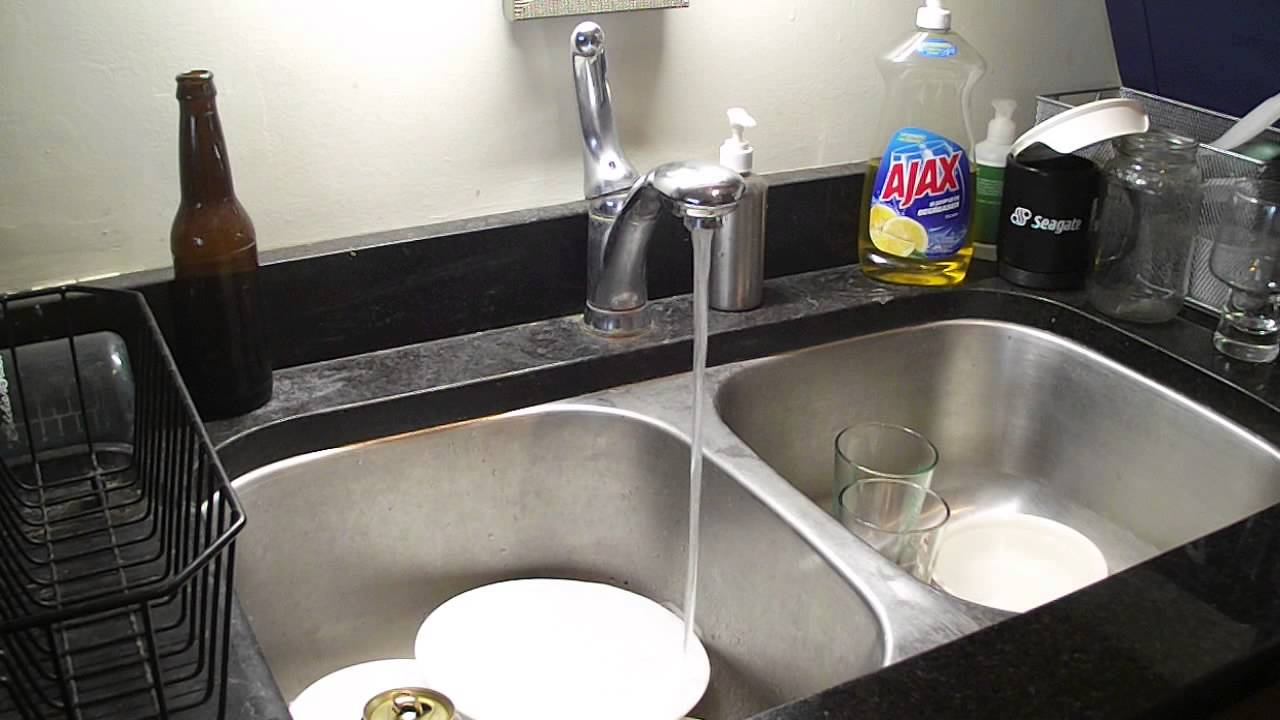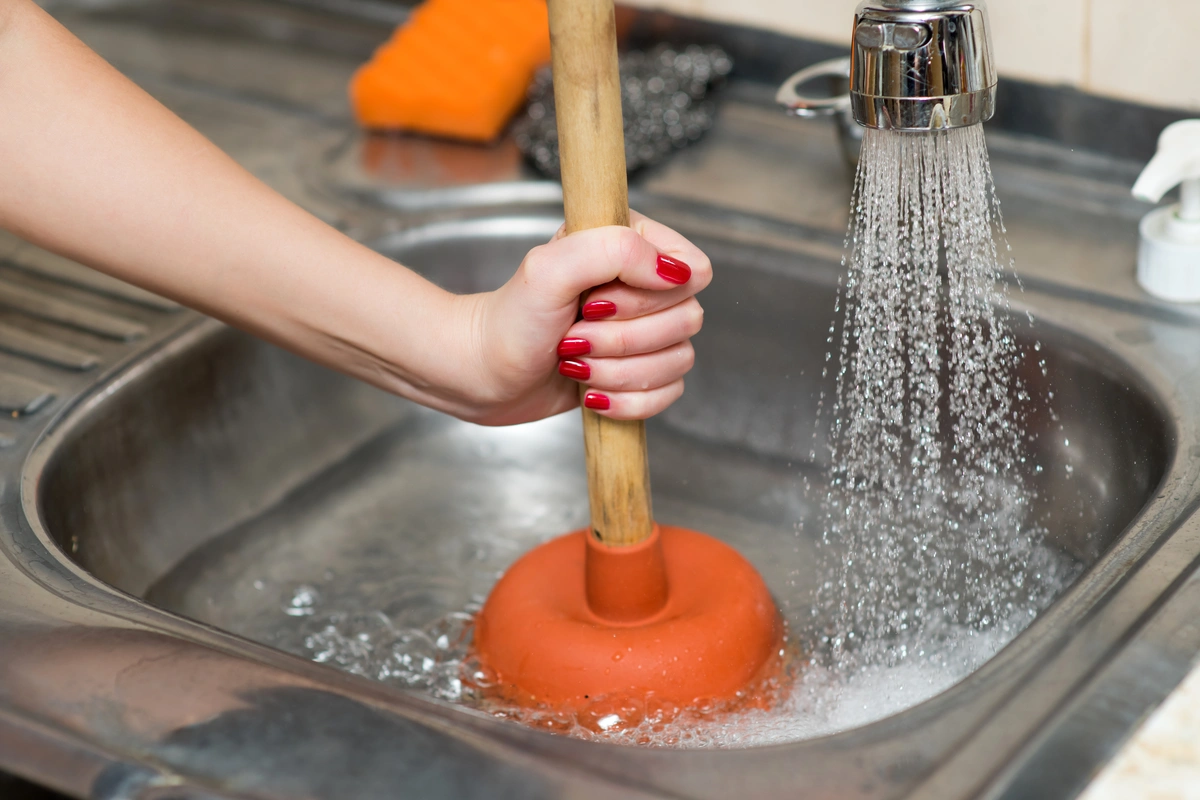How to Flush Out a Kitchen Sink Drain
If you've noticed that your kitchen sink is draining slower than usual or has a foul odor, it may be time to flush out your drain. Flushing out your kitchen sink drain is an important maintenance task that can prevent clogs and keep your sink functioning properly. Here's how to do it in 10 easy steps.
How to Unclog a Kitchen Sink Drain
If your kitchen sink is already clogged, you'll need to unclog it before flushing out the drain. You can use a plunger, a plumbing snake, or a mixture of baking soda and vinegar to clear the clog. Once the clog is cleared, you can move on to flushing out the drain.
DIY Kitchen Sink Drain Flushing
You don't need to call a plumber to flush out your kitchen sink drain. This is a simple task that you can do yourself with a few tools and some basic knowledge. Not only will it save you money, but it will also help keep your kitchen sink in good condition.
Clearing a Clogged Kitchen Sink Drain
If you've noticed that your kitchen sink is draining slowly, it's likely due to a clog. This can be caused by a buildup of food particles, grease, and other debris. To clear the clog, you can use a plunger or a plumbing snake. If these methods don't work, you may need to use a chemical drain cleaner or call a professional plumber.
Steps for Flushing Out a Kitchen Sink Drain
1. Begin by removing any standing water from the sink using a bucket or a cup.
2. Use a plunger to push any remaining water down the drain and loosen any debris.
3. Mix equal parts baking soda and vinegar and pour it down the drain.
4. Let the mixture sit for a few minutes to allow it to fizz and break down any buildup.
5. Boil a pot of water and pour it down the drain to flush out any remaining debris.
6. Use a plumbing snake to remove any stubborn clogs.
7. Once the clog is cleared, run hot water down the drain for a few minutes to flush out any remaining debris.
8. If you have a garbage disposal, run it with cold water to help clean it out.
9. Use a towel or paper towels to wipe down the sink and remove any remaining residue.
10. Finally, pour some lemon juice down the drain to freshen it up and eliminate any lingering odors.
Tools Needed for Flushing Out a Kitchen Sink Drain
In order to flush out your kitchen sink drain, you'll need the following tools:
- Plunger
- Plumbing snake
- Baking soda
- Vinegar
- Pot of boiling water
- Lemon juice
Natural Methods for Flushing Out a Kitchen Sink Drain
If you prefer to use natural methods for cleaning and maintaining your kitchen sink drain, there are a few options you can try. These include using a mixture of baking soda and vinegar, boiling water, or lemon juice. These methods are not only effective, but they are also environmentally friendly.
Preventing Clogs in Your Kitchen Sink Drain
The best way to deal with a clogged kitchen sink drain is to prevent it from happening in the first place. Here are some tips to prevent clogs:
- Don't pour grease down the drain
- Use a drain guard to catch food debris
- Run hot water down the drain after each use
- Regularly flush out your drain using the steps outlined above
Professional Drain Flushing Services for Kitchen Sinks
If you're experiencing frequent clogs or are unable to clear a clog on your own, it may be time to call a professional drain flushing service. They have specialized tools and equipment to clear even the toughest clogs and can help prevent future clogs from occurring.
Common Causes of Clogged Kitchen Sink Drains
There are several common causes of clogged kitchen sink drains, including:
- Food debris and grease buildup
- Foreign objects, such as utensils or small toys, accidentally dropped down the drain
- Tree roots growing into the plumbing system
- Old, corroded pipes
- Improperly installed plumbing
If you're experiencing frequent clogs, it's important to identify the cause in order to prevent them from happening in the future.
The Importance of Maintaining a Clean and Functional Kitchen Sink Drain
:max_bytes(150000):strip_icc()/how-to-install-a-sink-drain-2718789-hero-24e898006ed94c9593a2a268b57989a3.jpg)
Preventing Clogs and Costly Repairs
 A clogged kitchen sink drain is not only a nuisance, but it can also lead to more serious problems if left untreated. When food scraps, grease, and other debris build up in the drain, they can cause blockages that prevent water from draining properly. This can lead to standing water, foul odors, and even potential health hazards. In addition, if the clog is severe enough, it may require the help of a professional plumber, resulting in costly repair bills. By regularly
flushing out your kitchen sink drain
, you can prevent clogs and avoid expensive repairs.
A clogged kitchen sink drain is not only a nuisance, but it can also lead to more serious problems if left untreated. When food scraps, grease, and other debris build up in the drain, they can cause blockages that prevent water from draining properly. This can lead to standing water, foul odors, and even potential health hazards. In addition, if the clog is severe enough, it may require the help of a professional plumber, resulting in costly repair bills. By regularly
flushing out your kitchen sink drain
, you can prevent clogs and avoid expensive repairs.
Improving the Functionality of Your Kitchen
 A
clean and functional kitchen sink drain
is essential for a well-functioning kitchen. When the drain is clogged, it can slow down your daily tasks, making washing dishes, preparing food, and cleaning up a frustrating and time-consuming process. By keeping your kitchen sink drain clear, you can improve the efficiency of your kitchen and save yourself valuable time and energy.
A
clean and functional kitchen sink drain
is essential for a well-functioning kitchen. When the drain is clogged, it can slow down your daily tasks, making washing dishes, preparing food, and cleaning up a frustrating and time-consuming process. By keeping your kitchen sink drain clear, you can improve the efficiency of your kitchen and save yourself valuable time and energy.
Preventing Foul Odors and Bacterial Growth
 A clogged kitchen sink drain can also lead to foul odors and bacterial growth. Food scraps and other debris can begin to decompose in the drain, creating a strong and unpleasant smell. This can not only make your kitchen an unpleasant place to be, but it can also be a health hazard. In addition, standing water in the drain can become a breeding ground for bacteria, putting you and your family at risk of illness. Regularly
flushing out your kitchen sink drain
can prevent these issues and keep your kitchen smelling fresh and clean.
A clogged kitchen sink drain can also lead to foul odors and bacterial growth. Food scraps and other debris can begin to decompose in the drain, creating a strong and unpleasant smell. This can not only make your kitchen an unpleasant place to be, but it can also be a health hazard. In addition, standing water in the drain can become a breeding ground for bacteria, putting you and your family at risk of illness. Regularly
flushing out your kitchen sink drain
can prevent these issues and keep your kitchen smelling fresh and clean.
Simple Steps for Flushing Out Your Kitchen Sink Drain
 Fortunately,
flushing out your kitchen sink drain
is a simple and easy process that can be done regularly to keep your drain clear and functioning properly. Begin by running hot water down the drain for a few minutes to soften any buildup. Next, pour a mixture of hot water and vinegar down the drain, followed by a handful of baking soda. Allow this mixture to sit for a few minutes before flushing it out with hot water. For tougher clogs, a plunger or drain snake may be necessary. By incorporating these simple steps into your regular cleaning routine, you can maintain a clean and functional kitchen sink drain.
Fortunately,
flushing out your kitchen sink drain
is a simple and easy process that can be done regularly to keep your drain clear and functioning properly. Begin by running hot water down the drain for a few minutes to soften any buildup. Next, pour a mixture of hot water and vinegar down the drain, followed by a handful of baking soda. Allow this mixture to sit for a few minutes before flushing it out with hot water. For tougher clogs, a plunger or drain snake may be necessary. By incorporating these simple steps into your regular cleaning routine, you can maintain a clean and functional kitchen sink drain.
Conclusion
 In conclusion,
flushing out your kitchen sink drain
is a vital part of maintaining a clean and functional kitchen. By preventing clogs, improving functionality, and preventing foul odors and bacterial growth, regularly cleaning your kitchen sink drain can save you time, money, and potential health hazards. So don't neglect this important task and make it a regular part of your kitchen cleaning routine.
In conclusion,
flushing out your kitchen sink drain
is a vital part of maintaining a clean and functional kitchen. By preventing clogs, improving functionality, and preventing foul odors and bacterial growth, regularly cleaning your kitchen sink drain can save you time, money, and potential health hazards. So don't neglect this important task and make it a regular part of your kitchen cleaning routine.





:max_bytes(150000):strip_icc()/Kitchensinkdrain-GettyImages-184337984-5a0c63b447c2660037542e67.jpg)











:max_bytes(150000):strip_icc()/freshen-and-unclog-drain-with-baking-soda-1900466-22-bbf940b70afa4d5abef0c54da23b1d3f.jpg)



















:max_bytes(150000):strip_icc()/freshen-and-unclog-drain-with-baking-soda-1900466-22-bbf940b70afa4d5abef0c54da23b1d3f.jpg)



































:max_bytes(150000):strip_icc()/how-to-flush-a-drain-1900633-01-36d4e14373164225b8ba499f48b60506.jpg)
/how-to-install-a-sink-drain-2718789-hero-24e898006ed94c9593a2a268b57989a3.jpg)


















